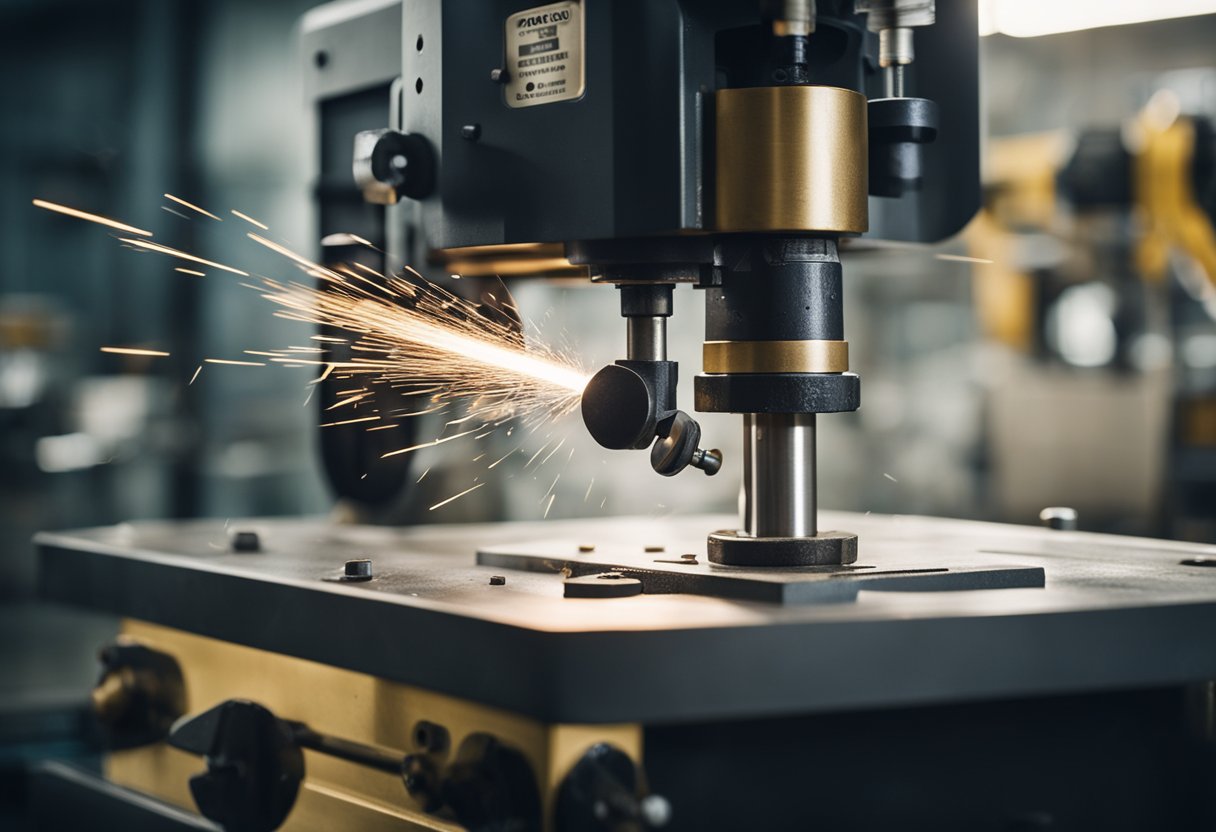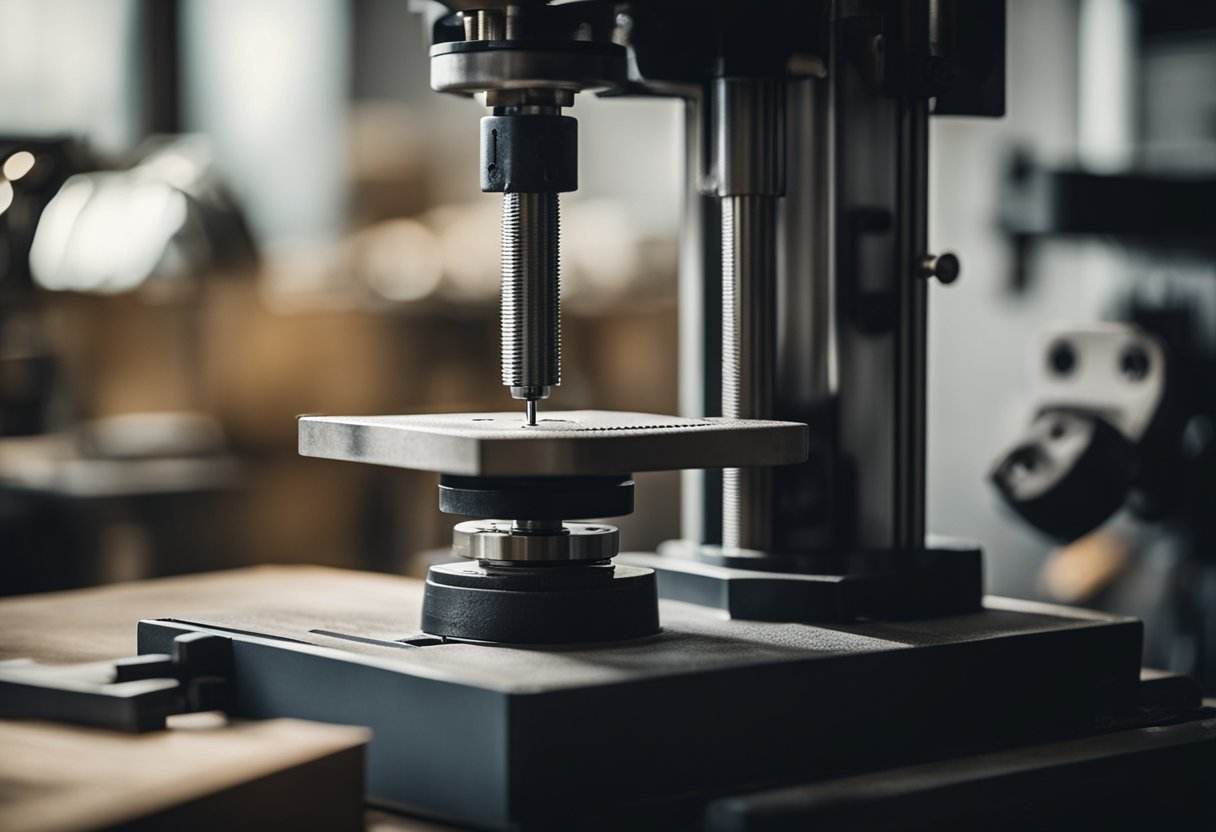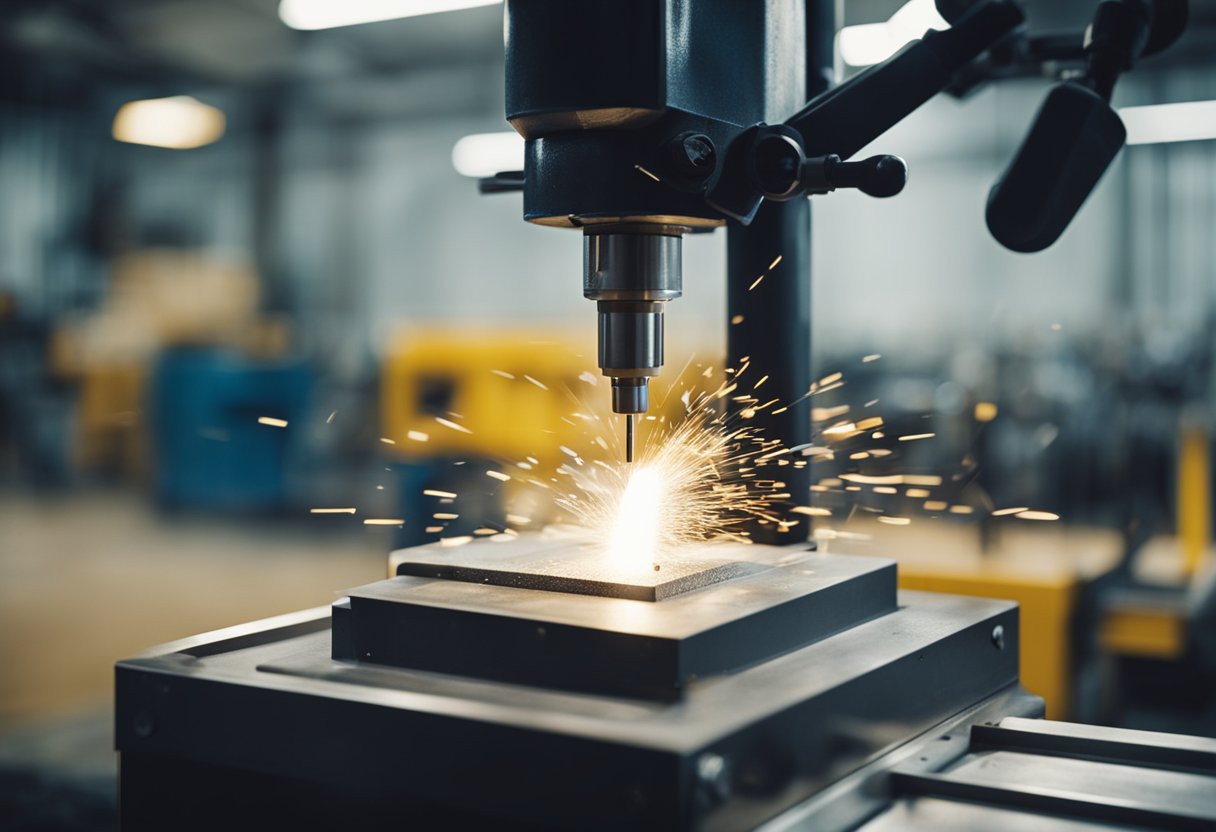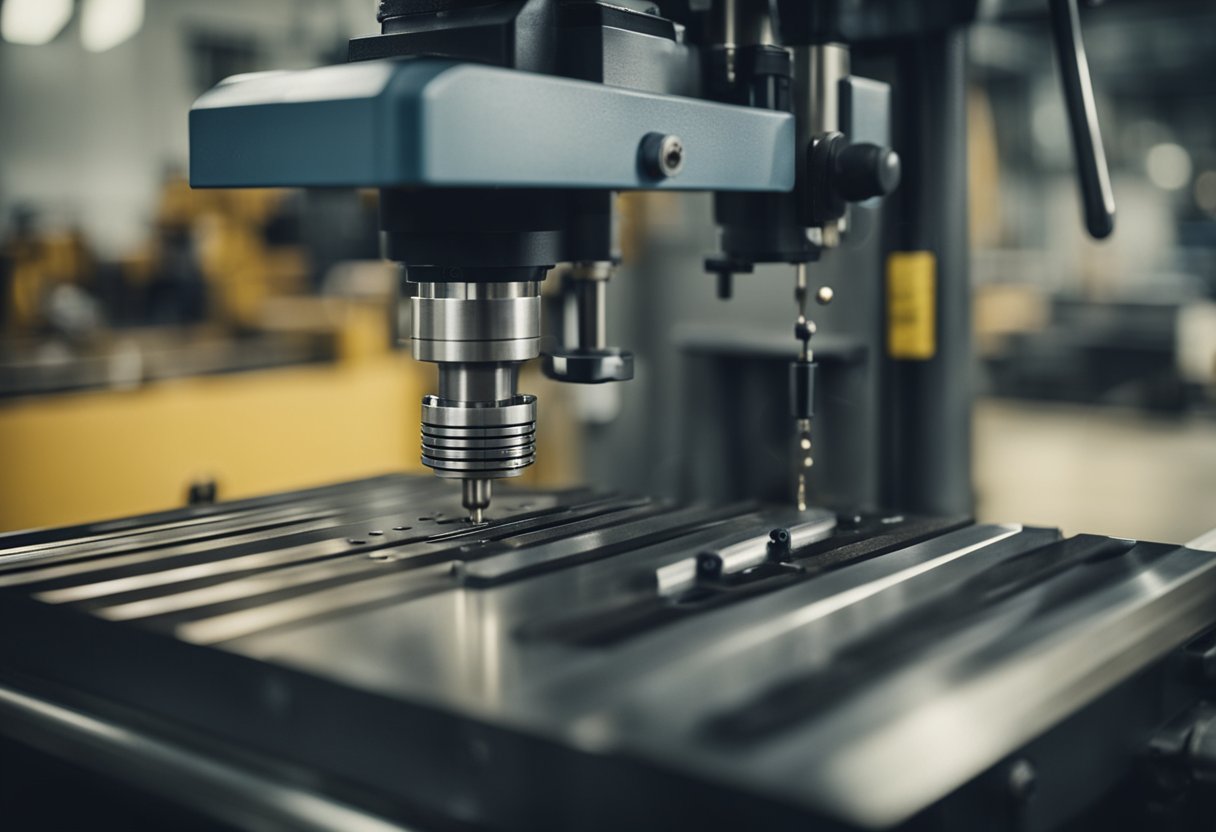Boring a cylinder with a drill press is a great way to achieve accurate and precise results. Whether you’re working on a DIY project or a professional job, a drill press is an essential tool for boring cylinders. By following a few simple steps, you can bore a cylinder with a drill press quickly and easily.
To bore a cylinder with a drill press, you need to understand the drill press and choose the right tools. You’ll need to prepare the workpiece, set up the drill press, and bore the cylinder. Measuring and adjusting are also important steps in the process. Safety and maintenance are crucial to ensure a successful outcome. In this article, I’ll walk you through the process of how to bore a cylinder with a drill press, step by step.
Key Takeaways
- Understanding the drill press and choosing the right tools are essential for boring a cylinder with a drill press.
- Preparing the workpiece, setting up the drill press, and measuring and adjusting are important steps in the process.
- Safety and maintenance are crucial to ensure a successful outcome.
Understanding the Drill Press
https://www.youtube.com/watch?v=JFMFdBSyb6M&embed=true
As someone who has worked with drill presses for years, I can confidently say that they are one of the most versatile and useful tools in any workshop. A drill press is a machine that is designed to drill holes into materials, such as wood, metal, and plastic. It is a powerful tool that can be used for a wide range of applications, from drilling small holes to boring large cylinders.
The drill press consists of several key components, including the spindle, quill, swing, and rotation. The spindle is the part of the drill press that holds the drill bit. It is connected to the quill, which is the part of the drill press that moves up and down. The swing is the distance between the spindle and the column of the drill press. This distance determines the maximum width of material that can be drilled. The rotation is the speed at which the drill bit spins.
One of the most important things to understand about the drill press is how to properly set it up. This includes adjusting the height of the table, securing the material to be drilled, and selecting the appropriate drill bit. It is also important to understand how to adjust the speed of the drill press based on the material being drilled. For example, drilling through metal requires a slower speed than drilling through wood.
When using a drill press to bore a cylinder, it is important to use the correct technique. This includes centering the cylinder on the drill press table, selecting the appropriate drill bit, and using the correct speed and feed rate. By following these steps, you can ensure that your cylinder is drilled accurately and efficiently.
Overall, the drill press is an essential tool for any workshop. Whether you are drilling small holes or boring large cylinders, the drill press is a versatile and reliable tool that can help you get the job done quickly and efficiently.
Choosing the Right Tools
https://www.youtube.com/watch?v=qQJ6LCOSvmI&embed=true
When it comes to boring a cylinder with a drill press, choosing the right tools is crucial. The right tools will ensure that you can bore a cylinder accurately and efficiently. In this section, I will discuss the tools that you need to bore a cylinder with a drill press.
Drill Bit
The first tool that you need is a drill bit. The drill bit is used to make a pilot hole in the cylinder. The size of the drill bit that you need will depend on the size of the cylinder that you are boring. It is important to choose a drill bit that is slightly smaller than the size of the boring bit that you will be using.
Boring Bit
The boring bit is the tool that you will use to enlarge the pilot hole in the cylinder. The size of the boring bit that you need will depend on the size of the cylinder that you are boring. It is important to choose a boring bit that is the same size as the cylinder that you are boring. This will ensure that you can bore the cylinder accurately and efficiently.
Boring Bar
The boring bar is the tool that holds the boring bit. There are two types of boring bars that you can use: a fixed boring bar and an adjustable boring bar. The fixed boring bar is used for boring cylinders that are a standard size. The adjustable boring bar is used for boring cylinders that are not a standard size.
High-Speed Steel
The cutting tool that you use should be made of high-speed steel. High-speed steel is a type of steel that is designed to withstand high temperatures and maintain its hardness. This makes it ideal for cutting through metal.
Cutting Head
The cutting head is the part of the boring bit that does the cutting. There are different types of cutting heads that you can use, such as a carbide cutting head or a diamond cutting head. The type of cutting head that you use will depend on the material that you are cutting.
In conclusion, choosing the right tools is crucial when it comes to boring a cylinder with a drill press. The drill bit, boring bit, boring bar, high-speed steel, and cutting head are all important tools that you need to consider. By choosing the right tools, you can ensure that you can bore a cylinder accurately and efficiently.
Preparing the Workpiece
https://www.youtube.com/watch?v=J6XUQMzgfk8&embed=true
Before starting to bore a cylinder with a drill press, it is important to properly prepare the workpiece. This includes selecting the right material and securing it in place with a clamp.
Selecting the Material
The material you choose for your workpiece will depend on the specific project you are working on. Common materials used for boring cylinders include wood, metal, plastic, and MDF. It is important to choose a material that is appropriate for your project and can be easily drilled with a drill press.
Securing the Workpiece
Once you have selected the material for your workpiece, it is important to securely clamp it to the drill press table. This will prevent the workpiece from moving while you are drilling, which can result in inaccurate holes or even injury.
To secure the workpiece, place it on the drill press table and use a clamp to hold it in place. Make sure that the workpiece is level and stable before proceeding to the next step.
Adjusting the Table
Before drilling, it is important to adjust the drill press table to the correct height. This will ensure that the drill bit is properly aligned with the workpiece and will prevent the bit from breaking or bending.
To adjust the table, loosen the locking nut and raise or lower the table until it is at the correct height. Once the table is in the correct position, tighten the locking nut to secure it in place.
By properly preparing the workpiece, you can ensure that your cylinder will be accurately and precisely drilled with a drill press.
Setting Up the Drill Press
https://www.youtube.com/watch?v=sh1WUQ-rEbg&embed=true
When it comes to boring a cylinder with a drill press, setting up the drill press is essential for achieving precision and accuracy. Here are the steps I follow to set up the drill press:
Step 1: Adjust the Speed
The first step is to adjust the speed of the drill press. Depending on the type of material you are drilling, you may need to adjust the speed of the drill press. For example, if you are drilling through metal, you will need to use a slower speed. On the other hand, if you are drilling through wood, you can use a higher speed. Adjusting the speed of the drill press is important because it helps to prevent overheating and breakage of the drill bit.
Step 2: Set the Depth Stop
The next step is to set the depth stop. The depth stop is a feature that allows you to control the depth of the hole you are drilling. This is important because it helps to ensure that all the holes you drill are of the same depth. To set the depth stop, you need to adjust the collar on the drill bit. You can use a ruler or a depth gauge to measure the depth of the hole you need to drill.
Step 3: Secure the Workpiece
The third step is to secure the workpiece to the drill press table. This is important because it helps to prevent the workpiece from moving while you are drilling. You can use clamps or a vise to secure the workpiece to the table.
Step 4: Adjust the Control
The final step is to adjust the control on the drill press. The control allows you to adjust the speed of the drill press and the depth of the hole you are drilling. You can use the control to fine-tune the drilling process and ensure that you achieve the desired results.
By following these steps, you can set up your drill press for boring a cylinder with precision and accuracy. Remember to adjust the speed, set the depth stop, secure the workpiece, and adjust the control for the best results.
Boring the Cylinder
https://www.youtube.com/watch?v=ovD6N_mie3w&embed=true
To bore a cylinder with a drill press, I need to follow a few steps. First, I need to measure and mark the desired bore point using a steel ruler or measuring tape 1. Then, I need to clamp the cylinder securely to the drill press table using a vise. The cylinder should be level and centered under the drill bit.
Next, I need to select the correct drill bit size based on the desired bore size. It is important to choose the right size bit to avoid over-boring or under-boring the hole 2. I can use a drill bit size chart to determine the appropriate bit size 3.
Once I have the right bit, I need to set the drill press to the desired depth of the hole. This can be done by adjusting the depth stop or by marking the bit with tape to indicate the desired depth 1.
Now, I am ready to start drilling. I need to turn on the drill press and slowly lower the bit into the cylinder. It is important to use a slow and steady feed rate to prevent the bit from overheating or breaking 4.
As I drill, I need to periodically lift the bit out of the hole to clear away debris and prevent the bit from overheating. Once I have reached the desired depth, I can turn off the drill press and remove the cylinder from the vise.
In conclusion, boring a cylinder with a drill press requires careful measurement, selection of the correct bit size, and a slow and steady feed rate. By following these steps, I can create a precise and accurate cylindrical hole in my workpiece.
Measuring and Adjusting
When it comes to boring a cylinder with a drill press, measuring and adjusting are crucial steps to ensure accuracy and precision. Before starting, I make sure to have all the necessary tools, including a micrometer, steel ruler, and honing tool.
First, I measure and mark the desired bore point using a steel ruler or measuring tape. It is important to measure from the edge of the piece and mark the bore point, ensuring it is centered and level with reference points on the top and bottom of the material. Measuring twice will ensure accuracy.
Once the bore point is marked, I adjust the drill press to the correct speed. The speed of the machine must be adjusted to maintain consistent drilling accuracy. The material being drilled and the size of the bit will determine the appropriate speed. I use a chart to determine the correct speed for the material and bit size.
Next, I align the drill bit to the bore point and begin drilling. It is important to keep the drill bit perpendicular to the material to ensure a straight bore. I also use a honing tool to remove any burrs or imperfections from the bore.
After drilling, I use a micrometer to measure the bore diameter and ensure it is the correct size. If the bore is not the correct size, adjustments must be made to the drill press speed and bit size.
Overall, measuring and adjusting are essential steps in boring a cylinder with a drill press. By following these steps, I can ensure accuracy and precision in the final product.
Safety and Maintenance
When working with a drill press, safety should always be a top priority. It is essential to take the necessary precautions to avoid injury. Here are some safety tips to keep in mind when boring a cylinder with a drill press:
-
Wear safety glasses: When drilling, chips and debris can fly off and cause eye injuries. Therefore, it is crucial to wear safety glasses to protect your eyes.
-
Keep the work area clean: Dust and debris can accumulate around the drill press, creating a slip hazard. Therefore, it is essential to keep the work area clean and free of clutter.
-
Use cutting oil: When drilling metal, it is essential to use cutting oil to lubricate the drill bit and reduce friction. This not only helps prolong the life of the bit but also reduces the risk of injury.
-
Maintenance: Regular maintenance of the drill press is crucial to ensure it operates safely and efficiently. This includes cleaning and lubricating the machine, checking the belts and pulleys, and inspecting the drill bits for damage or wear.
By following these safety precautions and performing regular maintenance on the drill press, you can help ensure a safe and efficient drilling experience.
Common Mistakes and How to Avoid Them
When it comes to boring a cylinder with a drill press, there are several common mistakes that can occur. In this section, I will discuss some of these mistakes and how to avoid them to ensure that your cylinder boring project is a success.
Overshooting
One of the most common mistakes when boring a cylinder with a drill press is overshooting. This occurs when the drill bit goes too far into the cylinder, causing damage to the component or even breaking the drill bit. To avoid overshooting, it is important to carefully measure and mark the desired bore point before drilling. Use a steel ruler or measuring tape to measure from the edge of the piece and mark your bore point. Make sure the spot is centered and level with reference points on the top and bottom of the material. Measuring twice will ensure accuracy.
Vibration
Another common mistake when boring a cylinder with a drill press is vibration. This occurs when the cutting head vibrates or wobbles during the boring process, which can cause the bore to be uneven or even damage the cylinder. To avoid vibration, it is important to use the correct size boring bit by accurately measuring the internal diameter of the cylinder. Then, select a boring bit of the same diameter. Additionally, make sure that the cutting head is securely fastened and tightened before beginning the boring process.
Common Mistakes
In addition to overshooting and vibration, there are other common mistakes that can occur when boring a cylinder with a drill press. For example, choosing a bore size that is too small can cause damage to the component or even cause the drill bit to break. Conversely, selecting a bore size that is too large can also cause problems. A larger bore size will allow more material to be removed at once, but it can also reduce speed and accuracy. To avoid these mistakes, it is important to carefully measure and select the correct size boring bit before beginning the boring process.
Overall, by avoiding these common mistakes, you can ensure that your cylinder boring project is a success.
Frequently Asked Questions
What is cylinder boring and how is it done?
Cylinder boring is a process of enlarging or creating a hole in the cylinder of an engine block. This is done to either repair a cylinder or to increase the engine’s displacement. The process involves using a machine to remove material from the cylinder walls until the desired size is achieved.
What are the tools needed to bore a cylinder?
To bore a cylinder, you will need a boring machine, a boring bar, a set of boring bits, a micrometer, a dial bore gauge, a torque wrench, and a cylinder honing tool. Each of these tools has a specific function and is necessary to achieve accurate and precise results.
What is the difference between honing and boring a cylinder?
Boring a cylinder involves removing material from the cylinder walls to increase its size, while honing involves removing a small amount of material to improve surface finish and roundness. Honing is typically done after boring to achieve the desired surface finish and size.
Can a drill press be used for cylinder boring?
Yes, a drill press can be used for cylinder boring, but it requires a specialized attachment known as a boring bar. Using a drill press for cylinder boring is not recommended for high-performance engines or when high accuracy is required.
When should a cylinder be bored?
A cylinder should be bored when it is out of round, has deep scratches or gouges, or when the piston-to-wall clearance is excessive. Boring a cylinder can also be done to increase the engine’s displacement, but this should only be done after careful consideration and planning.
Is it possible to bore a cylinder at home without a boring machine?
It is possible to bore a cylinder at home without a boring machine, but the results may not be accurate or precise. The most common method is to use a honing tool to remove material from the cylinder walls. However, this method is time-consuming and may not produce the desired results. It is recommended to have cylinder boring done by a professional machine shop for best results.
Footnotes

Hi, I’m Sal Muller of Tooltrip.com. My DIY experience led me to understand essential power tools for home projects. Tooltrip.com guides enthusiasts and professionals in choosing right tools for any job. I provide concise top tool reviews for easier, efficient DIY.






